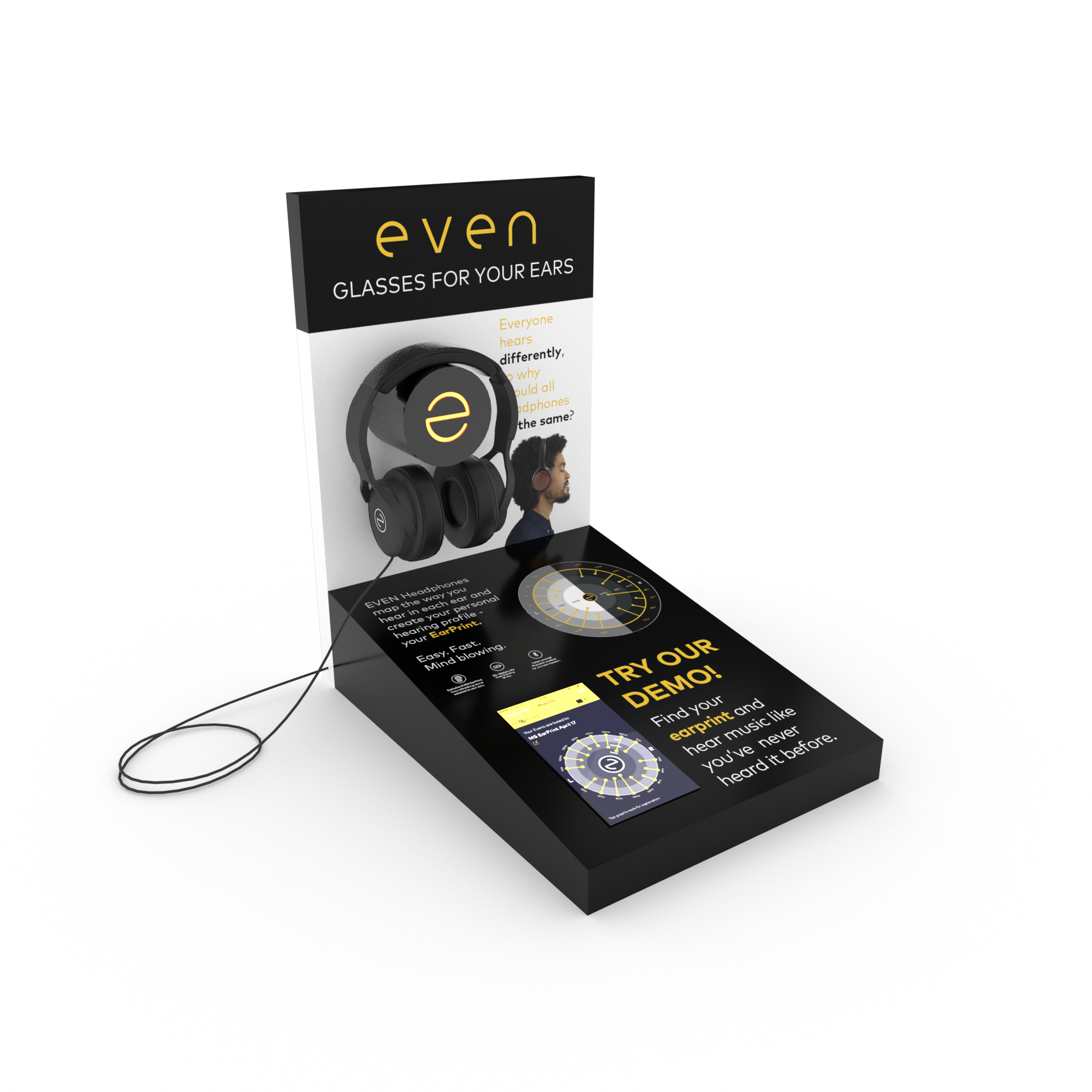You need to make a splash at retail with a point of purchase display as part of your product launch. Now what? The process of developing a compelling and engaging point of purchase display requires creative thinking, understanding retailer requirements, your customer, and most importantly, the unique features of your product.
1. Know the retailer requirements
Each retailer has their own requirements for displays in their stores. Some retailers require you to follow a specific format or fit into an existing structure. Others allow you to have a wide range of control over the structure, graphics and functionality.
How much space do you have? Is power available? What is the shelf depth? How does the display fit into the store fixture or is it freestanding? Do they allow video/interactive elements? If so, what are the video restrictions? Are there graphic requirements?
Ask your retailer for in-store merchandising guidelines. If you don’t have relationships with the retailers, visit the store and see what others in and outside of your category are doing and how. This can help provide cues for what an “approved” display looks like.
2. Understand the goal of your retail display
A display can and should serve many purposes. It can educate the consumer about your product, highlight competitive advantages over competitors, compel a shopper to pick up your package, illicit feelings, promote a brand/product/lifestyle etc. And many, many other things.
You also need to understand how your display will function within the specific retail environment. In a vacuum, an educational display may be great in an unassisted sale environment. In one where a sales person assists the shopper routinely, it may not be as valuable and focusing on what benefits the user will get or lifestyle impacts the product will have may be better. Or, it may just need to convey a “feeling” that the shopper wants to bring to their life, or simply a brand.
By having a clear goal or goals for your display, you start to frame up what and how a successful display to you looks and functions, to help guide the rest of the development.
3. Develop your products’ “Elevator Speech”
This sounds simple – Sell me on your product in 10 seconds or less. That’s about the amount of time you have IF a shopper stops at your display. You may have just a few seconds to stop someone walking in the aisle if they’re not specifically seeking out your product.
Have a clear hierarchy – headline, sub-head and product features. Your display should have a clear visual pathway for shoppers to move throughout your display quickly while understanding what it is your display is promoting. Avoid too technical or overly complex language and write in bullet form to keep copy to a minimum. Remember, if your packaged product is in or below the display, you can use that to supplement the display content.
4. Incorporate interactive elements
Consider video or touch-screens for products that may require more than a few short copy points to illustrate how to use, the benefits of using or highly technical products. Video can also be used to illicit a lifestyle “feeling” the shopper would get if they purchased your product. Think of video as a supporting element to further engage shoppers – who wants to read these days?
A product “dummy” or working demo unit can also provide an interactive element to a display and provide shoppers with a sample they can touch & feel.
Use lights, depth, dimensions and different types of materials to intrigue shoppers and create differentiating details that stand out among the other displays in the store.
5. Know your budget and build smart
Retail displays can range from a few dollars each to thousands of dollars depending on complexity and quantity. Not only is there the cost to develop concepts and pitch them to retailers, there is the production cost of the physical displays, shipping to get displays to stores, labor to set it, ongoing maintenance to repair or replace damaged displays etc.
Knowing and setting a realistic budget can help prevent developing a display that is out of budget and having to scale back. Always better to start small and scale up as your budget allows.
Lastly, build smart. Retail is a tough environment. Displays get damaged by shoppers, kids, carts, store staff etc. By identifying the areas of your display most likely to fail or be damaged, your displays can be manufactured so that replacement parts can be easily and cost-effectively sent to stores ensuring your displays are always functioning.
Developing a compelling and smart point of purchase display isn’t rocket science. However, it does require careful research, planning and development to ensure you showcase your product to shoppers in the most effective and compelling way possible.
The guest blog post was written by Chris Horner, who is the Account Director at MOCO, Inc, a Shopper Marketing agency based in Minneapolis, MN with offices in San Francisco and Hong Kong. MOCO specializes in developing & manufacturing point of purchase displays, packaging and websites that help brands maximize their retail success. Learn more about us at bigideas.com.



